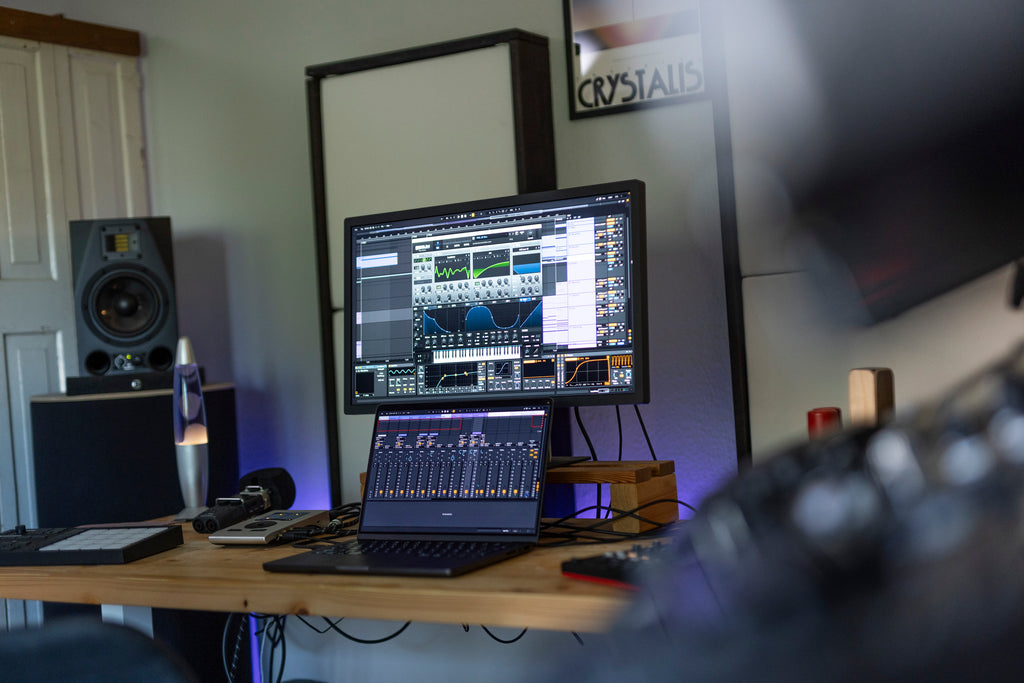
The beauty of live music lies in its imperfection. Even the most seasoned musician won’t be able to hit notes like a machine. While perfect quantization may sound good in theory, the actual result might be disappointing.
Humanization can also be defined as “anti-robotization”, meaning that you try to emulate the imperfection that comes with playing instruments like a human being. Let’s see how you can give your tracks a human touch.
1. Reduce quantization amount
Quantization is great - it allows you to correct mistakes you might have made while recording. However, too much of it makes your chords and drums sound robotic. To avoid this, simply decrease the amount of quantization from 100% to 50% or so. This way you'll be able to correct the timing of recorded MIDI information, but you're going to retain the imperfect quality.
To change the quantization amount, simply right click on the grid in Clip View and go to Quantize Settings.
If you're "drawing in" MIDI and you'd like to make it sound a bit more human, then you're going to have to offset each note individually. Unfortunately there's no function for that in Ableton Live yet.

Btw, peep this article on making trap beat patterns.
2. Manipulate the velocity
A common mistake made by producers is not using velocity when “drawing in” MIDI notes. No musician will ever be that accurate – there’s always going to be some velocity variation.
You could go and manually edit each note’s velocity, but that would take a lot of work. Instead, you can add certain effects that will automate this process.
Go to Live’s Midi Effects and use the Velocity MIDI Effect
Adjust the Random knob to around 10 to 20. You will hear it add subtle changes to your Velocity.
Also, if you’re using Ableton’s Sampler lets you modify the influence of velocity on volume. You will typically see a Vol<Vel percentage. The higher the ratio, the more your volume will be affected by Velocity.
When live drummers hit notes with different force, the pitch of drums also varies. To achieve this effect you could add pitch variation with Velocity. Just go to the MIDI tab of your Drum Rack sound and select the Pitch as Velocity’s destination A. Set the Amount to something around 5 to get slight variations in pitch.

Here are our top drum programming tutorials all listed.
3. Add swing
Swing is a term used by musicians to define slight variations in timing aimed to give liveliness and unpredictability to a rhythm. The most widely used form of swing used in electronic music is the 16th-note swing.
The easiest way to influence timing and add swing in Ableton Live is to use Grooves.
Go to Packs / Core Library / Swing and Groove and test some grooves to see which ones work for you. Simply grab a groove and drag it on top of the MIDI clip.

See this video on programming techno drums in Berlin style!
4. Vary the frequency content of your sounds
Let’s say you have a cool conga sound that you want to humanize. Think of it as a note within a chord, but instead of a synth, you have the conga sound. Duplicate the sound 3 or 4 times and add saturation, resonance or EQ to get different “versions” of the same sound. Use two or three combinations of the sound at once throughout the track.

See this article on top 10 audio effect tricks.
5. Field-recordings and acoustic instrument studio recordings
There’s nothing like having some authentic cymbal, hi-hat, snare or kick-drum loops at your disposal. Other instruments such as the electric guitar or the bass guitar are also quite difficult to emulate using a synthesizer. Certain techniques such like sliding and bending are best left natural and recorded live. Go ahead and record some instruments yourself or download some acoustic instrument sample packs.
Btw – here’s our pack of acoustic shakers you might want to check out.
You could also use a sound recorder in all sorts of creative ways. Go outside and capture different sounds. Record your friends while they’re having a laugh and use it in the intro. You name it.
6. Keep things interesting
This applies especially if you’re into experimentation and if your genre allows creative freedom. Forget about boring 8 bar loops and spice things up by making one big interesting composition.
No musician keeps a straight line from start to finish. He might play the intro softer than the verse. Thus, use subtle modulation and get creative using reverb, panning or chorus as the track progresses. Avoid sticking to rules and improvise as you build tracks.
After all, it’s your choice whether you want to humanize your tracks – robotic sounding tracks are fine too. If you’re going to steer certain tracks towards a more human side, remember that it’s all about feeling and certainly not about numbers. Avoid a one-size-fits-all approach and follow your gut.